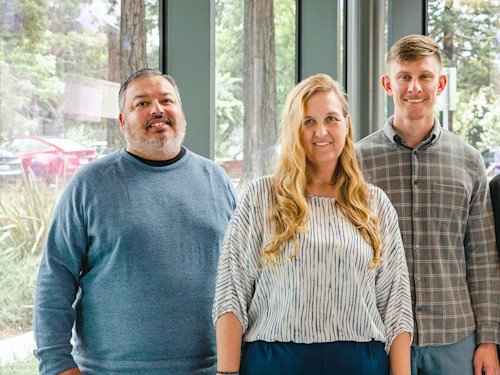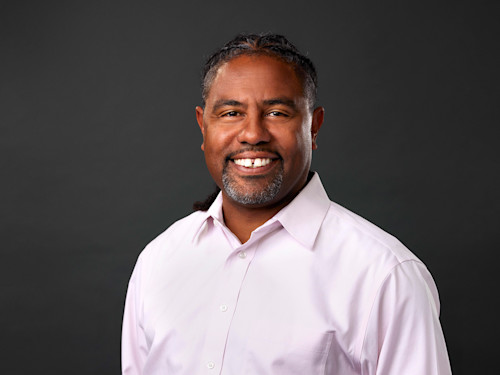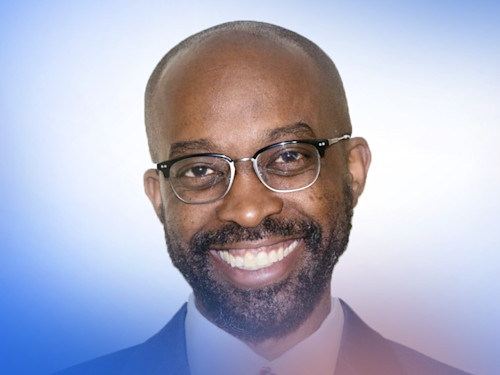Aurora Voices with Sagar Behere

Meet Sagar Behere, Aurora’s Director of Systems and Safety Engineering and resident Renaissance man who loves to learn about everything under the sun.
At the heart of Aurora’s technology and mission are the individuals behind it. In our series, Aurora Voices, we share the unique voices and stories of the people of Aurora, celebrating our backgrounds as well as personal and professional experiences.
At Aurora, Sagar helps define and lead Aurora’s efforts to deliver a safe and highly performant Aurora Driver, and directs our approach to safety in on-road testing and safety research. Prior to Aurora, Sagar led safety teams at self-driving car and global automotive companies, and received his Ph.D. in Architectures for Autonomous Driving from the Royal Institute of Technology in Stockholm, Sweden. To get a sense of Aurora’s momentum on this critical work, we asked Sagar about Aurora’s approach to safety and what he likes to do when he’s not working on this life-saving technology—which is nothing short of impressive.
How did you develop a passion for leading efforts to define safety for self-driving cars?
I have always been fascinated by the use of computers to control machines. For me, the ultimate safety challenge lies not in any one part of the technology, but in integrating the end-to-end product safely, efficiently, and continuously. After graduating as a mechanical engineer, I worked for one of India's largest automotive companies. There, I helped ship India's first common rail diesel engine as well as an anti-lock brake system, both of which were controlled by embedded computers.
These experiences motivated me to dig deeper into the theoretical foundations of computation and signal processing and find that connection to end-to-end safety. So, I moved to the Royal Institute of Technology in Sweden where I fell in love with AI, Computer Vision, Motion Planning, and Cognitive Robotics—effectively, the intersection of self-driving technology. I then inadvertently became the chief architect of an automated heavy-duty truck, and then developed self-driving technology for OEMs and other AV companies. Along the way, I have become fascinated by how incredibly complex technology becomes a mature product and also wrote my Ph.D. thesis on Architectures, Safety, and Systems Engineering for Autonomous Driving.
What makes working at Aurora special?
Aurora is a remarkable company. The combination of astute and accomplished leaders, outrageous goals, warm and friendly culture, cutting-edge technology, and values that emphasize being reasonable, truly make Aurora one of the best companies to work for. I am working in the area I love the most, at a company that is best positioned to succeed in solving one of the most consequential problems of our time. It feels almost inevitable that the path I have taken has brought me to Aurora and I feel fortunate to be here.
At Aurora, we often talk about the importance of our four-part safety approach. As an expert in safety, what do each of these tenets mean to you?
Our four-part approach to safety is critical. It shapes who we hire, who we partner with, and how we design and develop the Aurora Driver. Here’s how I interpret each:
Practice a culture of safety–We ensure that every Auroran feels empowered to speak up and can make every decision with safety in mind.
Develop the technology safely–Simply put, we endeavor to develop our technology safely. This includes our Virtual Testing Suite and the Aurora Test Site Network, both of which allow us to thoroughly test new versions of the Aurora Driver before they ever enter public roads. More on how we’re approaching this can be found on a recent panel I did with Partners for Automated Vehicle Education (PAVE).
Establish safety metrics–We’ve repeatedly said that disengagements are a poor measure of self-driving performance, so we’re developing better ways to allow our team and the public to assess the safety of the Aurora Driver.
Educate and engage–While we’ve emphasized putting safety into practice internally, we believe it’s equally important to educate the public, legislators, and investors about our safety practices.
One of the ways we educate the public about how our self-driving cars can operate safely on public roads is by developing our Safety Case. Can you tell us more about Aurora’s Safety Case?
A Safety Case is our answer to questions like, “What does it mean for a self-driving vehicle to be safe?" and "How is the development process at Aurora safe?" At Aurora, we’ve been building and refining a strong Safety Case for some time now, using a combination of existing safety standards and our team’s extensive experience building safety-critical systems in industries ranging from automotive to space.
We use a rigorous process to align around strong safety principles for our system and then adapt that framework to each area where we operate. Only when we’ve accomplished the work outlined in our Safety Case for a given operational domain—which we can think of as roadway types, speed ranges, and environmental conditions like weather, daytime/nighttime, etc.—do we begin driverless operation in that area.
Given that our goal is to move both people and goods by integrating the Aurora Driver into a variety of different vehicles (from sedans to class 8 trucks), how do we ensure that the Aurora Driver can safely handle driving on highways and in urban areas?
We essentially think through a superset design for both highways and urban areas and create a development roadmap that addresses the differences. For example, highway driving requires identifying and tracking objects at greater distances, so our sensor configurations and coverage map (space around the vehicle where the Aurora Driver must maintain awareness) must be able to meet those requirements. Urban environments typically require different maneuvers–like unprotected left turns–and have lower speeds, narrower lanes, and more complex actors and interactions (think cars weaving around slow-moving people) than highways.
All of this necessitates differences in: 1) how the Aurora Driver safely maneuvers through the environment and 2) the intangible areas of design and development, like hazard and criticality analysis, fault tolerance and response, etc. Similar to how human drivers can adapt dynamically to different situations, we don't have a one-size-fits-all safety strategy at Aurora. We tailor our Safety Case to meet the demands of each operational domain.
How are driver assistance systems (ADAS) different from what we’re building at Aurora?
Driver assistance is great and will save lives, but it’s a fundamentally different technology than a true self-driving vehicle, like what Aurora is building. ADAS relies on the presence of an alert and able human driver to take over when the system encounters something it can’t handle or something else goes wrong. This human backstop isn’t available for self-driving vehicles. The Aurora Driver we are developing will always be on point and won’t ever have to rely on a human driver to intervene to correct the vehicle’s decision. Ultimately, the Aurora Driver will operate far more safely than a human driver, in a wide range of scenarios, with absolutely zero reliance on onboard human supervision.
And lastly, what do you like to do when you’re not at the forefront of defining safety for cutting-edge technology?
Instead of pursuing one or two hobbies exclusively, I like to have many hobbies. In many ways, I am an amateur who dabbles in many fields and I truly enjoy the experience of learning and realizing almost anything is interesting, depending on how you look at it. At one time or the other in the past, I’ve:
Learned over half a dozen languages, including most of the romance languages, German, Swedish, and more!
Developed a love for flying and I have a pilot’s license (here’s a video of me flying a newly restored Cessna 185 in Sweden).
Learned how to be a radio jockey, ice skate, play classical guitar, dance Tango, build and fly kites, sail boats, bake bread from scratch, and cook many different cuisines.
Captained my university's chess team.
Became deeply passionate about Eastern mysticism, writing, and poetry. In fact, if things had gone differently, I think I would have been a poet or author. You can check out some of my musings on my blog.
And one last thing: it was after I imagined how I’d build a self-driving car from scratch, put my idea to paper, and actually built it, that I found my way to Silicon Valley—and the rest is history.
If you just felt inspired by what you read, we’re hiring in all disciplines to help us solve one of the biggest challenges of our generation. Check out our careers page to see open positions and learn more about what it’s like to work at Aurora.
Related (06)

May 31, 2023
Protecting our autonomous future

June 7, 2023
Aurora Voices with Lindsey Loewen

April 10, 2023
With Its Focus on Commercial Launch, Aurora Names Nat Beuse as Chief Safety Officer

February 9, 2023
Aurora Voices with Lance Underwood
August 30, 2023
Aurora Voices with Jason Leu

March 15, 2023